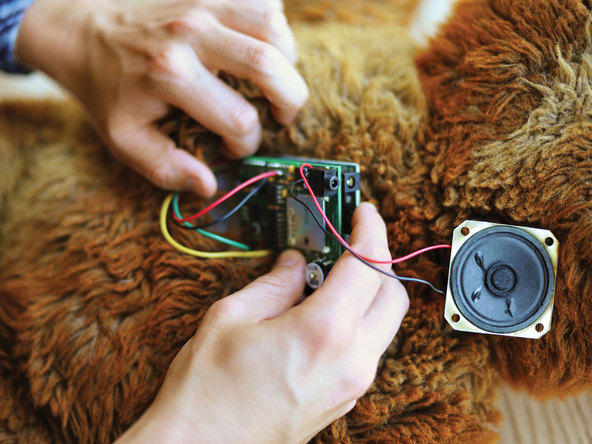Build a talking stuffed animal
Make a talking stuffed animal by adding a simple voice recorder module or smartphone recorder into a plush toy, learning sewing, electronics basics, and storytelling.


Step-by-step guide to build a talking stuffed animal
WOW !!!! Real FX Stitch Puppet Interactive Toy Unboxing | Disney Live Action Lilo & Stitch Talking
Step 1
Choose a plush toy with a seam or area you can open so the recorder will fit inside.
Step 2
Decide what your stuffed friend will say and write a short message or story that fits into about 10 to 30 seconds.
Step 3
Put the small batteries into the voice recorder module so it is ready to use.
Step 4
Record your message on the recorder by pressing the record button and speaking clearly into the microphone.
Step 5
Test playback on the recorder to make sure your message sounds the way you want.
Step 6
Use scissors to gently open a small seam along the back or bottom of the plush where the recorder will hide.
Step 7
Attach a small velcro strip inside the seam to make a secure pocket that you can open and close.
Step 8
Slide the recorder into the velcro pocket with the microphone facing outward toward the plush surface.
Step 9
Close the seam temporarily with a safety pin and press playback to confirm the voice plays nicely from inside.
Step 10
Sew the seam closed neatly while leaving the velcro pocket accessible so you can replace batteries or re-record later.
Step 11
Mark the button spot with a fabric marker or add a small patch so people know where to press to hear the voice.
Step 12
Press play one last time to enjoy your talking stuffed animal and make any small adjustments if needed.
Step 13
Share a photo or video of your finished talking stuffed animal and your story on DIY.org.
Final steps
You're almost there! Complete all the steps, bring your creation to life, post it, and conquer the challenge!

Help!?
What can I use if I can't find the small voice recorder module or tiny velcro strip?
If the small voice recorder module or tiny velcro strip is hard to find, tuck a smartphone or a recycled greeting-card sound module into a small fabric pocket and secure it with double-sided fabric tape or fabric glue instead of sewing the seam closed.
The voice sounds muffled or doesn't play well after I hide it—what should I check?
If the voice is muffled or won't play when hidden, follow the step to close the seam temporarily with a safety pin and press playback to confirm the microphone is facing outward in the velcro pocket and replace the small batteries if needed.
How can I adapt the activity for different ages?
For younger kids, have an adult handle the scissors and sewing while the child chooses the plush and records a short 10-second message, and for older kids let them write a longer 30-second story, operate the voice recorder module, and sew the velcro pocket themselves.
How can we enhance or personalize our talking stuffed animal after finishing it?
To personalize it, stitch a small fabric patch where you marked the button spot, embroider the toy's name next to the patch, or add a second salvaged sound module in another velcro pocket for alternate messages.
Watch videos on how to build a talking stuffed animal
LeapFrog My Pal Scout Talking Puppy Dog Super Fun For Kids
Facts about sewing and basic electronics for kids
📖 Making and telling stories with a toy boosts kids' language, memory, and creativity — great practice for storytellers.
🔋 Small voice modules can run on a single coin-cell battery and keep a toy talking for days with light use.
🪡 The oldest known sewing needles are over 40,000 years old — people sewed clothing long before written history.
🧸 The teddy bear was named after U.S. President Theodore "Teddy" Roosevelt in 1902.
🎙️ Tiny voice recorder modules often store 10–60 seconds of audio, while smartphones can record for hours.
How do I make a talking stuffed animal?
What materials do I need for a talking stuffed animal?
What ages is this activity suitable for?
What are the benefits, safety tips, and variations for a talking stuffed animal?


One subscription, many ways to play and learn.
Only $6.99 after trial. No credit card required



